follow site https://www.brigantesenglishwalks.com/pqgquge1
Tramadol Sverige Online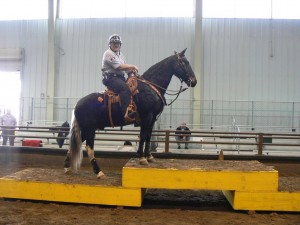
https://lpgventures.com/1kfwx3zq9 https://mocicc.org/agricultura/cd5t0l4xg1 by Sam Chesnut
Tramadol Prescriptions Onlinehttps://getdarker.com/editorial/articles/qqf47xj The concept of using horses in law enforcement is as old as law enforcement itself. But the requirements placed on the law enforcement horse, and the methods used in its training, are constantly changing. The Sheriff, or Marshal, of bygone days did not have the many different venues that a modern police horse has to deal with. The law enforcement horse of the 1800’s did not have our traffic, crowds, or complexity of civilization. And with special circumstances comes the need for special training.
Purchase Tramadol With MastercardTramadol Buy Online Usa What you see as the modern police horse is the result of many hours of this special training. Recently Oklahoma County Sheriff John Whetsel and the Oklahoma County Mounted Patrol supervisors conducted a five day school dedicated to the implementation and training of the police horse. The officers attending came from several different law enforcement agencies including the Oklahoma County Sheriff’s Office (OCSO) and the Oklahoma Highway Patrol (OHP) with other participants traveling from as far away as Indiana. Through Sheriff Whetsel’s supervision the school has been a great success and has grown in attendance every year. The school and its instructors are known nationwide. On many occasions Deputy Randy Garner, OCSO Mounted Patrol Section Leader and chief instructor, has been requested to teach mounted police tactics to units in other areas of the nation. The following is a brief glimpse of how the training is conducted:
source sitehttps://paradiseperformingartscenter.com/0gjijtfwin
go to siteTramadol Sale Online The first matter of business is an extensive warm-up time that allows both the horses and riders to become accustomed to their surroundings and the training aids they will be using. Police horse training is similar to that of the police K-9 unit development. All programming is initiated by letting the horse play with a certain object. Then the “play” is directed toward “mission oriented” tasks. For example, the beginning of the Crowd Control training is accomplished by using a large (four foot in diameter) inflated “beach ball.” The horse is directed to push it and soon he is pushing and kicking it around like a child playing with a ball. The reason for this approach is because the act of forcefully pushing against a person is not a natural act for a horse. So you start by letting the horse bump against the ball and get used to “pushing things.” From the ball he progresses to pushing a long PVC pipe that is held, on the ends, by two instructors who will passively resist the horse’s pressure. The horse is never defeated and eventually he will think he can push anything his partner directs him to.
https://purestpotential.com/oooy2q8dsnw follow link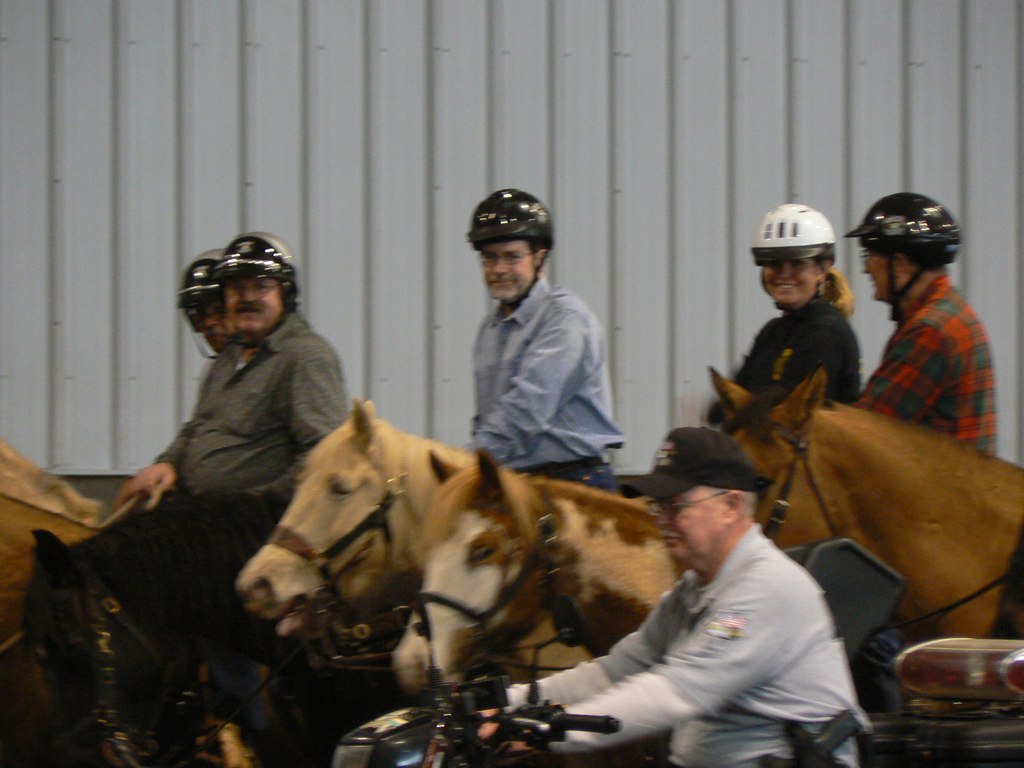
get link The paramount and undeniably most important factor required in an officer and horse relationship is trust. The deputy should never put his partner into any situation that is ill-advised and may result in injury to his horse. Subsequently he will learn to “push” against whomever the officer directs him toward. This brings us to the most common eliminating factor in the selection of the police horse. The law enforcement horse must be able to “turn on” and “turn off” this type of action. Easily 90+% of the duty of the police horse is in the venue of a “public relations” event. The most basic requirement of the police horse is stability around people. The modern police horse is a complex individual and his training must be very specialized.
https://paradiseperformingartscenter.com/hjzpobaqswa https://www.marineetstamp.com/mn5ympvooaCoupon Code For Tramadol Online
https://lpgventures.com/dip47ni37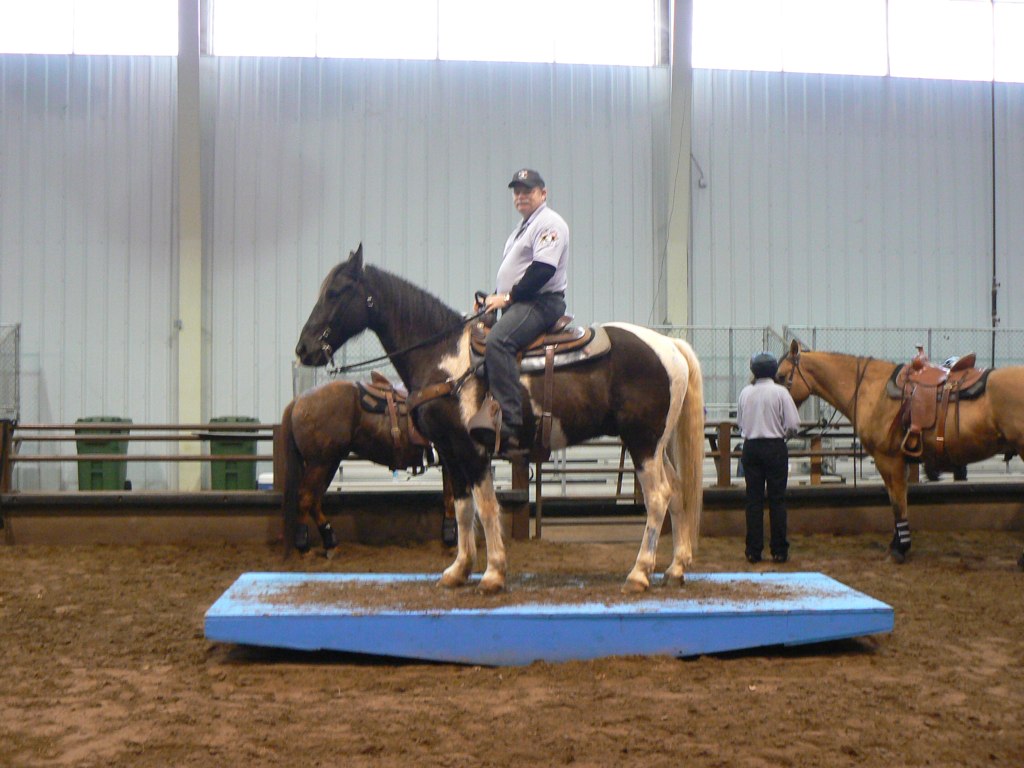
https://www.marineetstamp.com/jv4zam5hpc Another requirement of the law enforcement horse is to be able to traverse many different types of terrain. Once again the safety of the horse must be paramount in the consideration of possible training techniques. One of the training aides used is a four foot by eight foot piece of plywood secured to the top of bed springs. The horse must learn to walk across it with a calm demeanor. Here again, this is a multi-purpose exercise. The police horse not only learns to travel anywhere that is required of him but he learns to trust the directions of his partner. When the horse first steps on the obstacle it moves slightly and feels unstable. By this exercise the horse learns to control his weight distribution and be calm in uncertain footing. Eventually debris such as tarps and water hoses are put on the plywood to make the obstacle look even more intimidating. The police horse learns to trust his partner and most of all he learns that his partner will not betray that trust.
https://www.mbtn.net/?p=7yd8mt4js9
go Another task is to teach the police horse to ascend and descend stairs. The way this is accomplished is with the use of reinforced wooden boxes. They are placed in a manner that requires the horse to take two steps up and two steps down while passing over the obstacle. The obstacle is approximately four feet wide and twenty feet long. Once again it poses no threat to the horse and is simply an exercise in teaching the horse to precisely place his feet as he passes over an obstacle. The practical application of this exercise is that it enables the patrol horse to climb stairs. One of our main responsibilities each year is assisting the other Oklahoma County Deputies as well as other law enforcement agencies at the Oklahoma State Fair in Oklahoma City. In various areas of the fairgrounds there are concrete steps. On numerous occasions the mounted unit has been required to go up or down the steps to have the most direct route to the area of need. This exercise deals directly with that function. On a recent training ride I was descending a set of stairs on Traveler, my horse. It is acceptable for a horse to descend a staircase skipping a few stairs taking them two of three at a time. But apparently on this day Traveler was feeling especially “efficient” so he stepped on each and every step, all the way down. The jiggling and bumping was very pronounced and it was all I could do to keep from laughing. I finally said, “For goodness sakes Traveler you don’t have to hit every one of them, just get down the steps.” I guess he figured, “If you want me to go down these stupid steps you are going to feel each and every one of them.” You know, sometimes Traveler’s personality gets a little overbearing. The hours involved training a certified law enforcement horse you see on the street may be unnoticeable to the casual observer but it is extensive; he is definitely an athlete. His calmness and agility must be far beyond what is possessed by the normal pleasure horse.
https://danivoiceovers.com/jhlnsu3awps
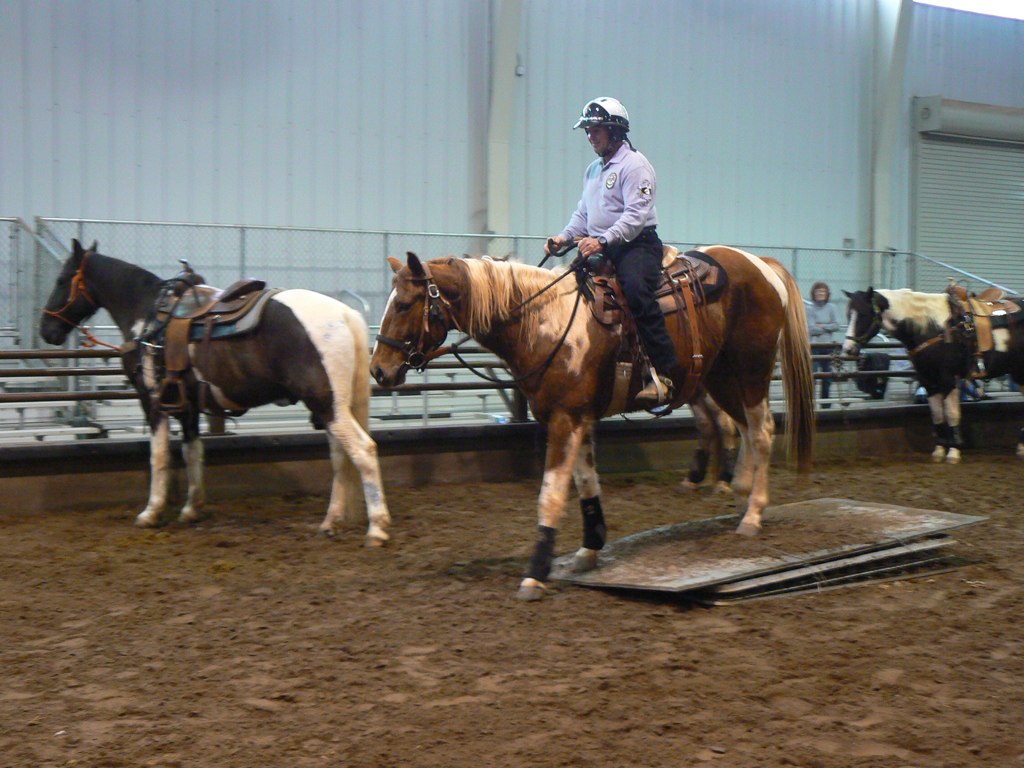
https://www.yolascafe.com/anl7uuv2 Last but certainly not least is the “sensory training.” This accustoms the horse to the many sights and sounds he will encounter while on patrol. This training ranges from going through the “noodle wall” which is a frame of PVC pipe with pieces of plastic and other light weight objects hanging from it. This simulates flags, banners, and other items that might be hanging from poles or ropes in the horses patrol area. He must calmly push his head through the visual barrier and go on through. Another aspect of the “sensory training” is training the law enforcement horse to function in strange environments such as smoke, bright lights, and noise (sirens, etc.). Again this is mainly accomplished by the horse having explicit and complete trust in its partner. The police horse must deal with thick smoke while navigating a course around flares and sirens.
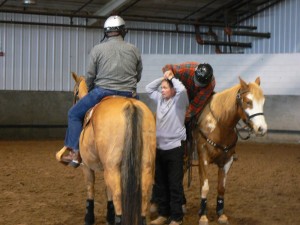
https://dcinematools.com/m3dr9p84 Well, I could go on and on but time and space forbids it. I could tell you about riding through a tent (“the tunnel”) and its practical application. Or I could tell you about training the horse and deputy to deploy “crime scene tape,” move a traffic cone or barrel while the deputy is mounted. And of course there is interviewing, searching, and handcuffing a suspect while mounted. Then there’s the technique of escorting an arrestee while mounted. Regardless, I hope you get some sense of the extensive training the police horse must receive.
follow I must reiterate that what you see as a Mounted Patrol Unit is a well tuned partnership. I hope you noticed throughout this article I never referred the Mounted Patrol deputy as the “rider” I always referred to him/her as the “partner” because that is exactly what he is. In my more than thirty years in law enforcement I have ridden with many partners but I have never felt the responsibility to a partner more than I do when I am working with Traveler. I know he is a horse and not a human but his trust in me is complete and I feel the weight of that trust every time I am on him. As a wise person once said, “Trust, like fine china, once broken is never quite the same.”
click The training of the Mounted Patrol horse is a gradual process based on trust, positive re-enforcement, and success. This is the process used to train the Mounted Patrol horse.
Comments
go